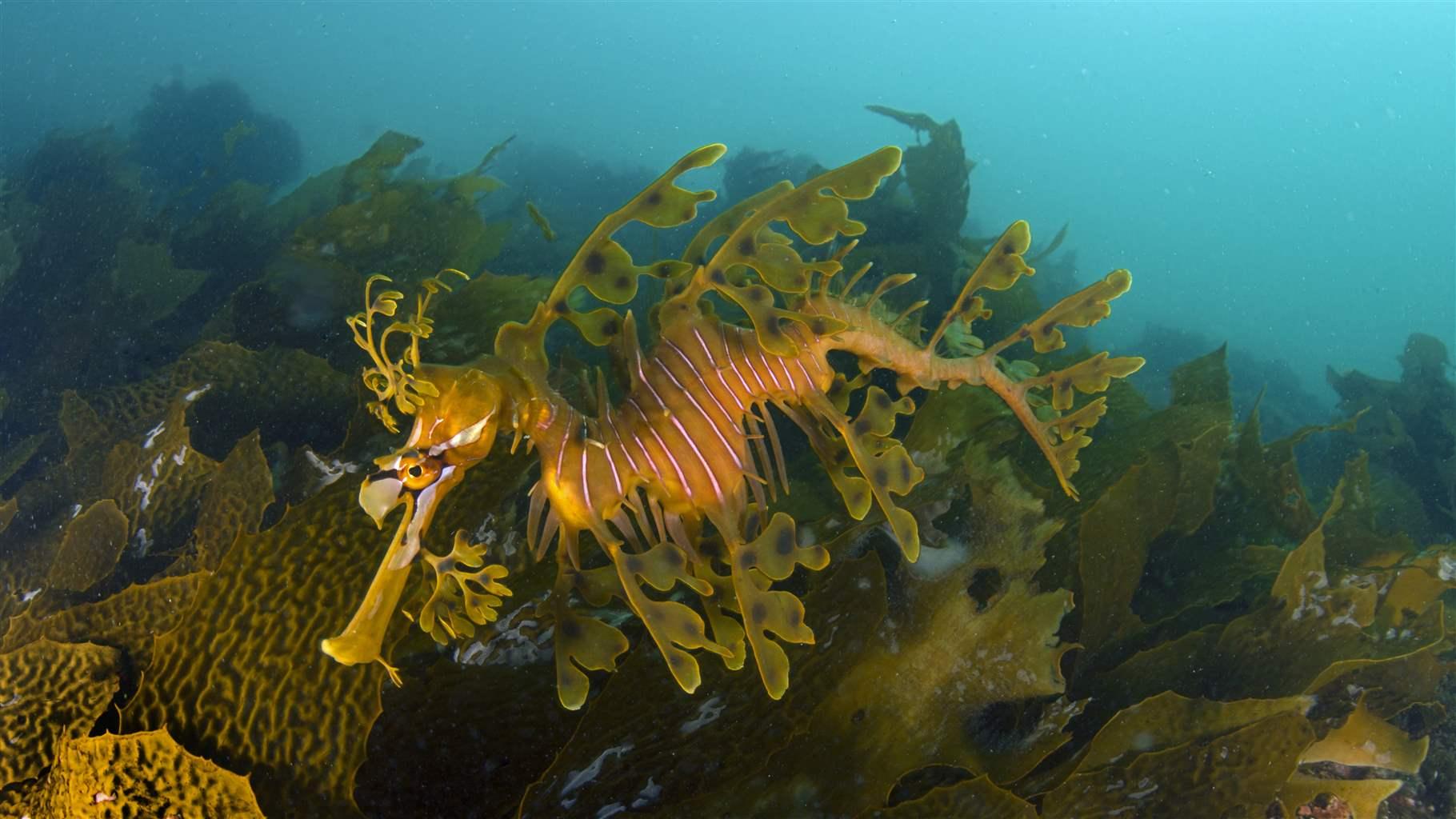South Coast Marine Park A Chance to Keep Good Times Rolling in For All West Australians

The dry heat and dirt, cawing crows and corrugated iron fence at our house in Hanbury Street Kalgoorlie in the late 1960s mining boom are my first memories of life—along with dreaming of when it would be time to follow summer’s siren song to the south coast for its breathtakingly white sand and sparkling seas.
Out west, we love our oceans. And with more coastline than anywhere else in Australia, there’s a lot to love. I was fortunate to learn early that WA’s coasts are our playground, our pantry and our privilege not only to enjoy, but to protect.
The waters of the south coast are part of Australia’s Great Southern Reef, which runs south from Kalbarri right round to New South Wales and is home to more unique marine life than the Great Barrier Reef. Off the shores of Esperance and Bremer Bay, leafy and weedy sea dragons play hide-and-seek amidst the tangled kelp and seagrass meadows. Two of Australia’s most endangered species—southern right whales and Australian sea lions—go there to birth and nurse their young. And there are a myriad of fish: snapper, nannygai, blue groper and hapuku, just to name a few. The Recherche Archipelago alone is home to more than 260 known species of fish, along with hundreds of species of molluscs, sponges and seaweeds.
We can’t be complacent about the future of these extraordinary natural places. Climate change is beginning to take its toll, and our unique marine life is increasingly under threat. Yet the WA south coast still has no marine parks in state waters to protect this incredible underwater wonderland—and the livelihoods and lifestyles it underpins. Whether you’re a surfer, snorkeler, commercial or recreational fisher, sailor, diver, swimmer or beach walker, an effective south coast marine park would ensure that you, your kids and your grandkids get to enjoy a healthy, big blue backyard.
The Cook Government has proposed just that: a world-class south coast marine park stretching from Bremer Bay to the South Australian border. Such marine parks are multi-use areas which typically allow recreation, tourism and commercial fishing. At the heart of an effective marine park are marine sanctuaries: fully protected, look-but-don’t-take areas which allow nature to get on with doing what it does best—reproducing and recovering. Scientific studies in Australia and overseas have repeatedly shown that sanctuaries result in more fish, bigger fish and more diversity of fish.
Take Kingston Reef sanctuary zone at Rottnest Island, for example. After 16 years of protection, there were 10 times more dhufish inside the sanctuary than outside, and three times more breaksea cod.
Meanwhile, in Ningaloo’s sanctuary zones, emperors reign! Researchers report that the abundance and size of spangled, redspot, yellowtail and grass emperors are significantly greater inside the sanctuaries than out.
And because fish don’t stay within lines on a map, the benefits of these fully protected areas can ripple through the broader marine environment. Like at Ningaloo and the Great Barrier Reef Marine Park, this can be a great outcome for conservation, tourism and fishing.
In fact, 9 out of 10 West Australians think marine sanctuaries are a good idea, according to polling released in September this year.
The Cook Government must press ahead with its plan, knowing the public is right behind it. The same poll showed 86 per cent of West Australians support a strong network of marine sanctuaries in the proposed park.
The good news is that for the last couple of years, the government, working with Traditional Owners, has consulted stakeholder groups, including recreational fishers, commercial fishers, tourist groups, south coast communities and businesses, and environment groups—including my West Aussie team at The Pew Charitable Trusts.
Now it’s time for the next step. The government is expected to release the draft park plans for public comment before the end of the year, and when that happens, I’d encourage everyone to have their say. We all have a stake in the protection of the incredible yet vulnerable marine life on our doorstep—for its sake, and ours.
Perth-based Michelle Grady is national director for The Pew Charitable Trusts, one of many non-government organisations working globally with stakeholders, communities, experts and governments to find science-based solutions for some of the world’s greatest challenges.Pew is part of the Save Our Marine Life alliance of 27 leading environmental groups; the alliance has tens of thousands of supporters across the nation.
Originally published in the West Australian on 26 November 2023.












